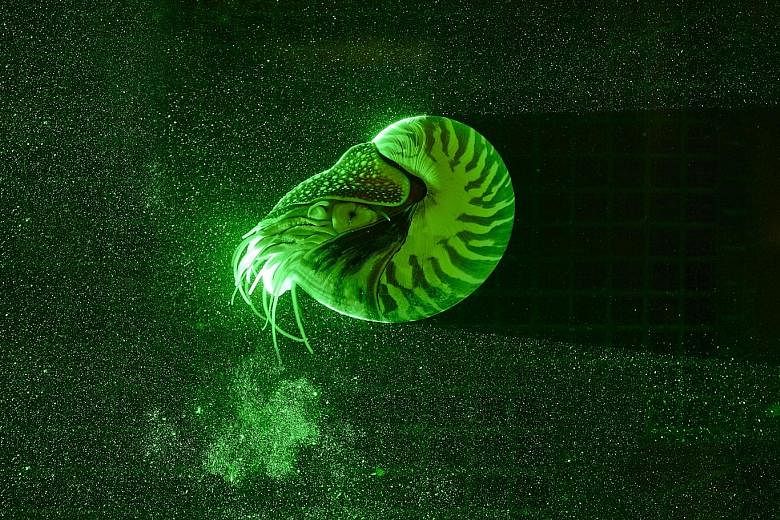Like a tiny submarine, the chambered nautilus speeds through the ocean on little jets that it creates by sucking in water and spitting it out.
However, as ways of movement go, jet propulsion is not usually a very good use of energy. In the ocean's depths where oxygen gets thin, the nautilus seems to be putting itself at risk by expending so much effort on movement. Fish use far less energy by pushing at the water with their fins. So how does the nautilus manage to jet around unscathed in the ocean's depths?
University of Leeds' biomechanics professor Graham Askew set out with graduate student Thomas Neil to understand better how this shellfish moves. They found that the nautilus is actually a highly efficient jet-propelled creature, wasting much less energy than marine organisms like squid or jellyfish that get around in a similar way.
The researchers began their study, which was published this week in the journal Royal Society Open Science, by liberally sprinkling an aquarium with minuscule floating particles of aluminium oxide. Then, one by one, they put five chambered nautiluses into the tank, and let them jet about.
They used high-speed cameras, a laser that lit up the particles and software that could record the particles' movements. In the constellation of specks, they saw the animals sucking in water, then forcing it out in the direction they were moving away from, with the pocket of expelled water and the nautilus shooting apart at velocities they could readily calculate.
When they ran the numbers, the researchers saw that the nautilus was able to use 30 per cent to 75 per cent of the energy it transferred to the water to move.
That was much higher than other similar swimmers. "Squid, they tend to be about 40 to 50 per cent efficient," Professor Askew said.
Bell-shaped jellyfish, which pulse their bells to squirt out water, also tend have lower than 50 per cent efficiency.
In general, moving very large volumes of water relatively slowly, as a fish's tail or a diver's flippers do, wastes less energy than having to swiftly accelerate very small amounts. But the nautilus has clearly found a way to make it work.
It seems, said Prof Askew, that when they are sucking in water, they do so in a wide stream, rather than in a more energetically costly narrow one. And they spend more time jetting than they do refilling in certain swimming scenarios, gently eking out the fluid they've already sipped in.
These strategies may be contributing to their ability to swim efficiently, getting by in situations where more vigorous jetting might get them in trouble, like in the low-oxygen deep ocean.
Still, for more details about the nautilus' survival strategies, fans of the creature will have to look to research from other groups. Prof Askew and colleagues have since turned their focus - and their high-speed camera - to cuttlefish, to learn more about how these jet swimmers move.
NYTIMES

